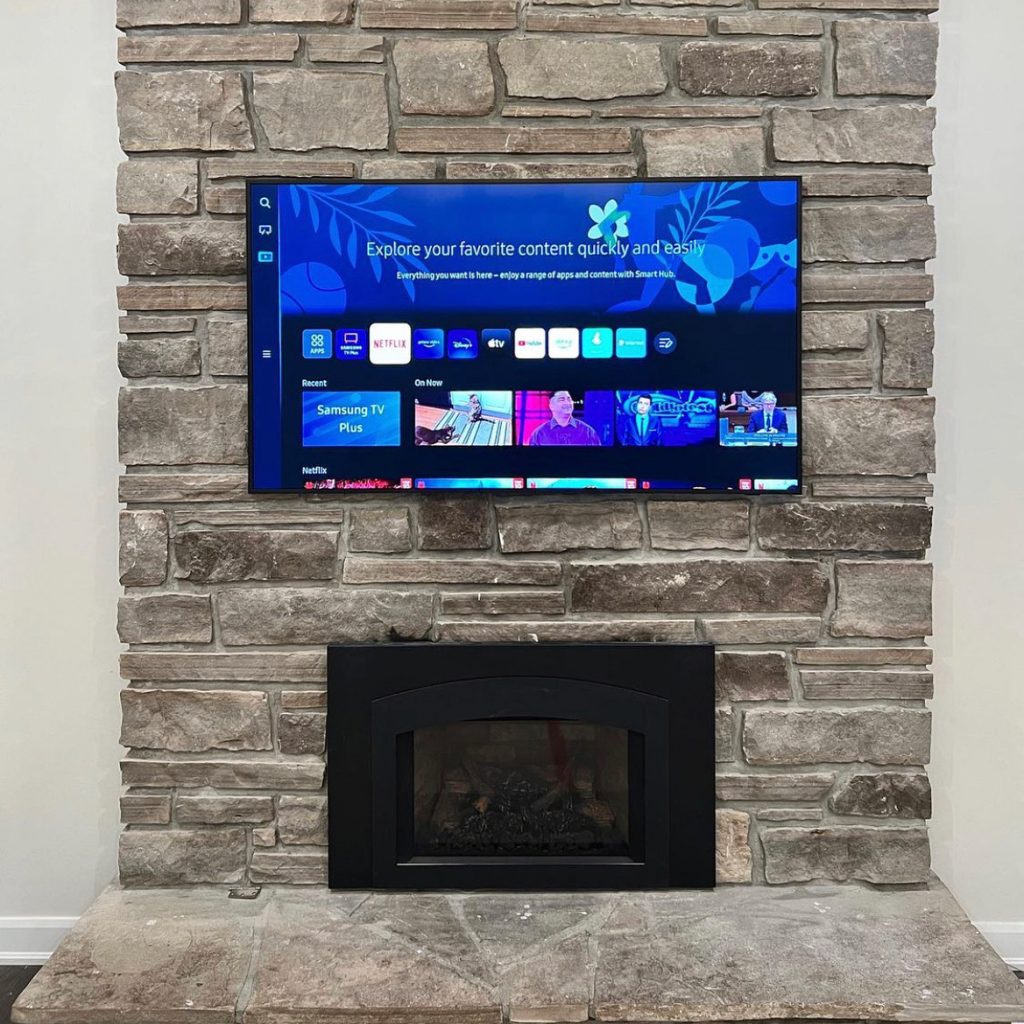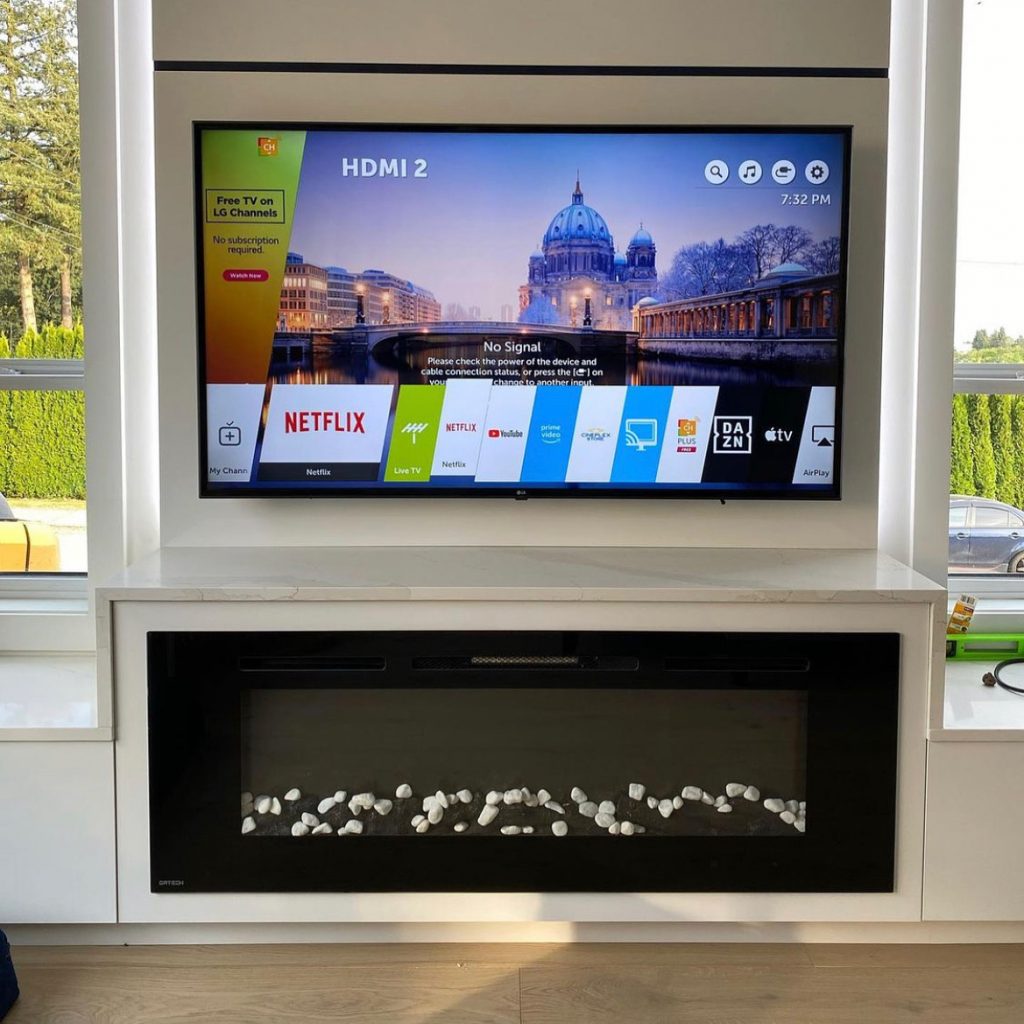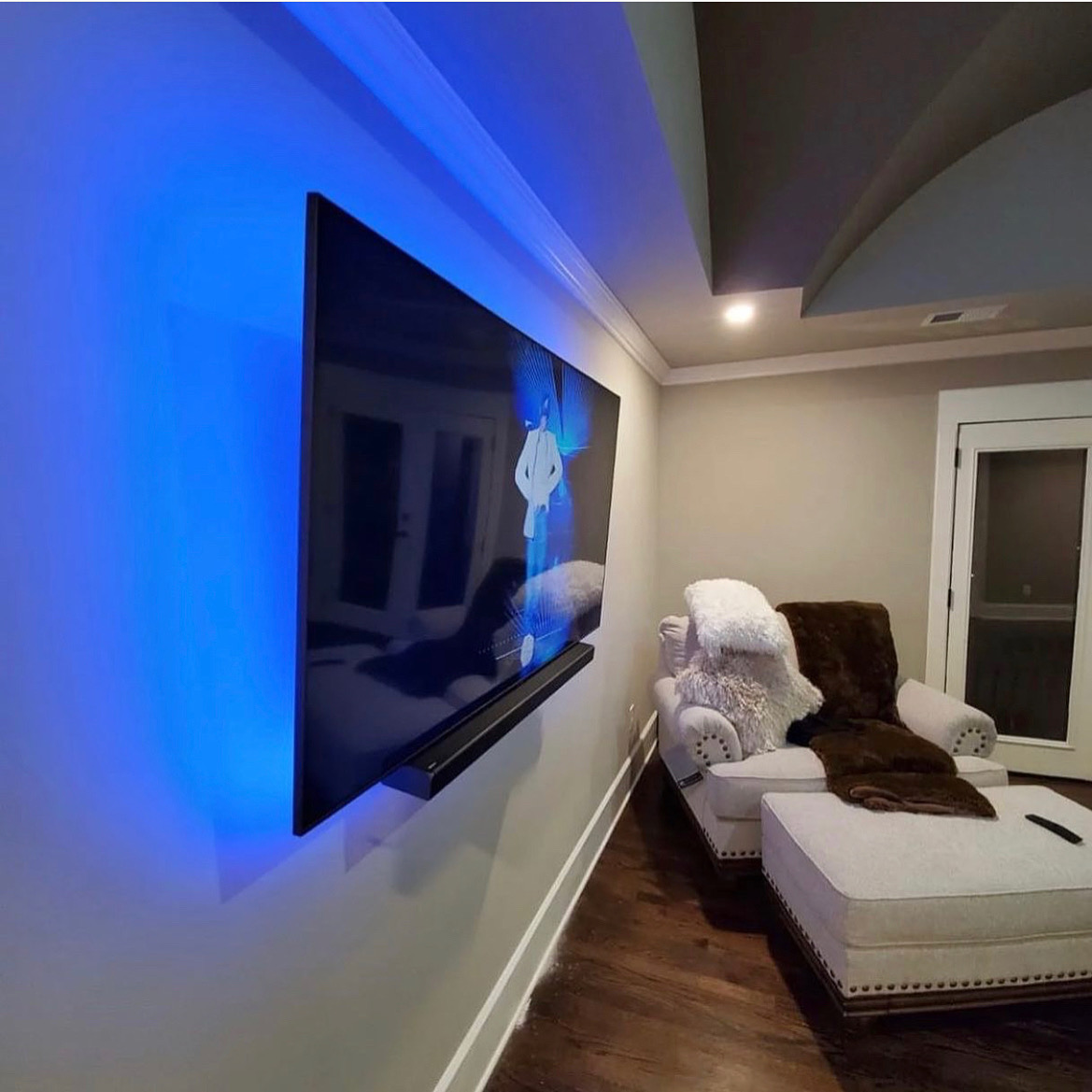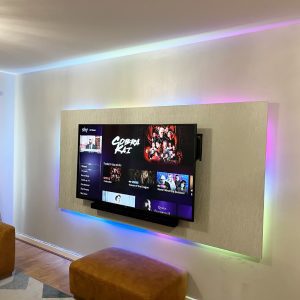Plaster is a very durable way to cover walls, but its strength is also a downside when you’re hanging things around your home. A heavy object like a TV has to be anchored to the wood support beams inside the wall. Although these beams may seem difficult to locate, you can get to them with a good stud finder and a masonry drill bit. You will also need weight-rated anchors like toggle bolts to fasten a TV mount to the wall. Secure it well so you can enjoy the view without any risk of damage to your TV.
1 Choose a spot at eye level to mount the TV. Determine where you would like to hang the TV and which spots in the room offer the best viewing angle. Generally, the center of a 42 in (110 cm) TV should be mounted 56 in (140 cm) from the floor, and larger TVs can be mounted a little higher to keep them at eye level. Make sure the TV is visible from different angles. Also, keep in mind the location of nearby power outlets.[1]
- Mount the TV to an interior wall. It has to be done on a wall containing support beams, since a TV won’t stay attached to bare plaster.
- To test the positioning, cut a piece of paper or cardboard and tape it to the wall. Take a seat to see if you’re able to view the TV comfortably without straining your neck.


2. Use a stud finder to locate the vertical wood studs in the wall. Get a quality stud finder, preferably one capable of detecting metal. To use the stud finder, hold it flat against the wall and activate it. It will beep if it detects one of the wooden support beams in the wall. Mark the location of each stud so you can use them to mount the TV.[2]
- Finding the studs can be a little tricky since plaster tends to have horizontal supports called lath as well. The studs are oriented vertically, so the stud finder will stay lit when you move it up and down.
- The lath will be nailed to the studs, so you can detect the metal nails to pinpoint the location of the studs. Another way to do this is to buy a rare-earth magnet and hold it against the wall to see where it sticks.
- If you knock against the wall, the areas with studs will produce a higher-pitched sound. The empty spaces produce a lower, more hollow sound.
Use a carpenter’s level to level the mount on the wall. This part will be easier if you have someone to hold the mount up for you. Press the mount flat against the wall, then set the level on top of it. Check the small capsule of liquid along the center of the level. If the mount is straight, the bubble in the liquid will stay in the center
- If the level is tilted in one direction, the bubble moves as well. For example, if it moves to the right, then the mount is sloping from right to left.
- Keep the mount as level as possible. The top and bottom edges should be parallel with the floor.
Mark the location of the mount’s screw holes with a pencil. Keep the mount pressed against the wall. While holding it in place, look for the holes. Expect most mounts to have 4 or 5 of them. Make sure these marks are clear so you know where to anchor the mount to the wall.
- Make sure the screw holes line up with the nearest studs. The studs tend to be positioned 16 to 24 in (41 to 61 cm) apart


Choose heavy-duty plaster anchors capable of bearing the TV’s weight. Get anchors capable of bearing at least 150 lb (68 kg) of weight. You can’t use anchors designed for drywall, so choose carefully. If you’re unsure what to pick, toggle bolts or molly bolts are most often used to support heavy weights. There are also some tube-shaped hollow wall anchors that are a little easier to work with, but they don’t bear quite as much weight
- Metal anchors are always better than plastic ones for hanging heavy items like TVs.
- To estimate how strong the anchors should be, add the weight of the mount and TV, then add on an extra 20% to the result for safety.
- For example, the TV and mount both weight about 50 lb (23 kg), and you add 20% onto the total: 50 lb + 50 lb+ 20 lb = 120 lb.
Drill pilot holes through the wall with a masonry drill bit. Select a drill bit that is 1⁄8 in (0.32 cm) smaller in diameter than the wall anchors you’re using. Fit a power drill with a matching drill bit. Then, drill straight through each of the marks and into the wood studs behind them. Make sure each hole is long enough to contain the anchors
- Pilot holes are necessary to prevent the plaster from cracking when you install the anchors.
- Since plaster is so hard, a regular drill bit won’t cut it. To make this easier, use an impact driver instead of a regular power drill.
Use an electric screwdriver to screw the anchors into the pilot holes. The installation process will vary slightly depending on the kind of anchor you’re using. To install a molly bolt or a hollow bolt, fit it inside a pilot hole. Use an electric screwdriver to rotate the anchor’s screw clockwise until it is flush with the wall. Molly bolts have flanges that will open and cling to the wall for stability.
- Toggle bolts are a little different. To use them, hold the mount up to the wall. Tuck in the flanges at the end of each bolt, then slide them through the mount and into the wall.
Use a screwdriver to remove the screws from the anchors. Take out the screws so you can use them to pin the mount to the anchors. This part is much easier than getting the anchors into the wall. Just insert the screwdriver into the screw heads and turn them counterclockwise. Eventually, the screws will come out of the wall, leaving the anchors behind.
- If you’re using toggle bolts, you won’t need to remove the screws. Removing the screws causes the toggle flanges to close and fall off the wall.
Attach the bracket to the wall with the anchor screws. Pick up the TV mount and hang it on the wall. Make sure the screw holes align with the anchors. Then, slide the screws through the mount and into the wall. Tighten them until they are flush with the wall again.
- When you’re done hanging the bracket, test it by giving it a good, hard tug. It should not budge at all. If it feels loose, the screws may not be tight enough or the anchors may not be securely inside the wall studs.
- If you need to reinstall the TV




